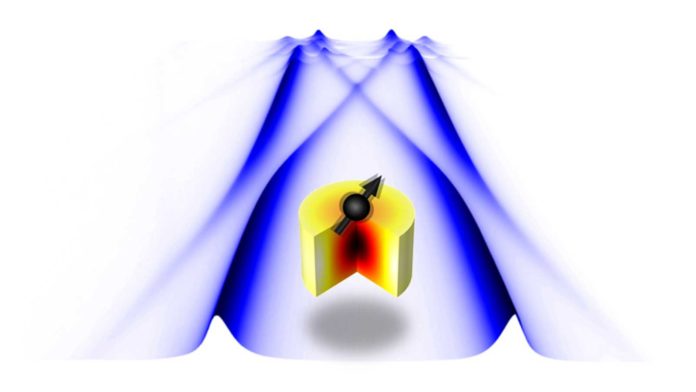Microwave photons are elementary particles shaping the electromagnetic waves that we use for wireless communications. On the other hand, magnons are the elementary particles framing what scientists call “spin waves”— wave-like disturbances in an ordered array of microscopic aligned spins that can occur in certain magnetic materials.
Microwave photon-magnon interaction has emerged in recent years as a promising platform for classical and quantum information processing. Yet, this interaction had proved impossible to manipulate in real-time until now.
In collaboration with the University of Chicago‘s Pritzker School of Molecular Engineering, scientists in the U.S. Department of Energy’s (DOE) Argonne National Laboratory have achieved a scientific control that is a first of its kind. They showed a novel methodology that allows controlling the interactions between microwave photons and magnons, conceivably prompting advances in electronic devices and quantum signal processing.
Xufeng Zhang, an assistant scientist in the Center for Nanoscale Materials, a DOE User Facility at Argonne, said, “Before our discovery, controlling the photon-magnon interaction was like shooting an arrow into the air. One has no control at all over that arrow once in flight.”
“Now, it is more like flying a drone, where we can guide and control its flight electronically.”
By employing an electrical signal, scientists periodically altered the magnon vibrational frequency, hence induced effective magnon-photon interaction. The result is a first-ever microwave-magnonic device with on-demand tunability.
The newly developed approach controls photon-magnon interaction’s strength at time while information is being transferred between photons and magnons. What’s more, it can even completely turn the interaction on and off.
Zhang noted, “Scientists have been searching for a way to control this interaction for the past few years. Now, this discovery opens a new direction for magnon-based signal processing and should lead to electronic devices with new capabilities. It may also enable important applications for quantum signal processing, where microwave-magnonic interactions are being explored as a promising candidate for transferring information between different quantum systems.”
Journal Reference:
- Jing Xu et al., Floquet Cavity Electromagnonics, Physical Review Letters (2020). DOI: 10.1103/PhysRevLett.125.237201
